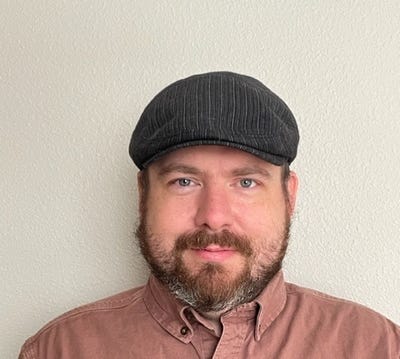Bridging the gap between CGTs and patientsBridging the gap between CGTs and patients
One of the industry’s foremost experts in advanced therapies says that easing access requires a multi-pronged, collaborative approach.
.jpeg?width=1280&auto=webp&quality=95&format=jpg&disable=upscale)
Miguel Forte, CEO of Kiji Therapeutics, spoke[OS1] with BioProcess Insider earlier this month on the evening before he addressed delegates at the International Society for Cell and Gene Therapy (ISCT) conference in Gothenburg, Sweden. His presentation delved into the challenges and opportunities for Europe in cell and gene therapy (CGT) development and manufacturing. In addition to his role at Kiji, Forte is president of the ISCT and a member of the board of directors for the Alliance for Regenerative Medicine (ARM).
Forte shared his vision for achieving a CGT-manufacturing global presence. He discussed how adopting the right strategies can lead to positive local impacts for markets around the globe, emphasizing that companies must strive to develop products ethically. “You need to make sure that you generate evidence and administer according to that evidence.”
Of course, there are many factors that stakeholders across the industry must consider if CGTs are to reach all the patients who need them. Companies must hire and train people to administer CGTs, and they must have access to facilities where treatments can be administered. Companies should invest in local manufacturing that can improve access, distribution, and costs of treatments. Meanwhile, stakeholders should also continue to work on new models to better finance innovative treatments to make them more affordable.
Forte said that the majority of regulatory discussions revolve around topics related to manufacturing and specifically practices related to chemistry, manufacturing, and controls (CMC). Drug developers and manufacturers should not view regulators as gate keepers but instead think of them as partners who can help them achieve their safety and quality goals. “Go early to regulations,” he said. “Go frequently, and go well prepared, because if you do that, you will [be better positioned to] take advantage of their advice.”
At the ISCT’s May 2024 meeting in Vancouver, Canada, Forte said that regulators around the world gathered and shared their experiences about CGT development and manufacturing. As such technologies have advanced and more therapies reach various stages of clinical development, regulators are becoming more comfortable assessing them. They have adjusted and calibrated their opinions on topics such as risk aversion as more data becomes available.
Developments in CGTs
Forte’s new company, Kiji Therapeutics, was incorporated in Paris, France in March 2023. The company uses licensed technology from a public institution in Madrid, Spain, which enables Forte’s team to “take cells that are useful, safe, and known, and engineer them for a therapeutic purpose.”
Kiji’s cells are manufactured in Madrid at a small scale, but the company is currently in active talks with contract development and manufacturing organizations (CDMOs) to secure large scale three dimensional (3D) manufacturing space for future clinical trials in Europe and the US.
Microspheres are used in 3D manufacturing within a bioreactor to provide more surface area for cells to attach and grow. The increased surface area enables increased cell growth at a lower cost. “We’re improving manufacturing and making it more cost effective,” Forte said.
“The essence of Kiji is optimizing the source of [induced pluripotent stem cell] IPSC-derived [mesenchymal stem cells] MSCs, and then engineer them to make them potent and make them targeted to a specific, optimized therapeutic asset.”
Kiji’s lead product KJ01 is one such IPSC-MSC. “The key element of the technology is optimization of the cell for therapeutic function. So, we engineered a cell to express CXCR4, which is really a driver for the cell to go to the inflammation.” When the cells reach the desired site, they are designed to deliver large quantities of Interleukin 10 (IL-10), which is a cytokine that controls inflammation.
Kiji is currently using adipose-derived MSCs from donors, but it plans to optimize the source of the cells and use IPSCs for improved consistency, cost, availability, and opportunities for engineering. Forte said that this strategy enables Kiji to address two key elements of cell therapy today, which are optimizing the source of the cells, and optimizing their functionality.
Forte cited Mesoblast’s recent work on Remestemcel-L for graft-vs-host disease as a recent success in the field that solved CMC manufacturing elements. Kiji will target the same indication, but with further optimization.
Kiji’s technology is also being studied to treat further diseases such as inflammatory bowel disease (IBD) and psoriasis, and there are large unmet medical and market needs for both conditions. “We believe we are particularly positioned to bring value to those indications.” Animal studies have already shown short and long term benefits, mediated through induction of regulatory T cells (Tregs). Forte said that with IL-10, scientists can “switch the inflammation from a pro- to an anti-inflammatory state, mediated very much by inducing Treg numbers and function.” Forte added that CGTs are expanding into treating autoimmune diseases, “mostly by [using] CAR T [cells] against B cells like lupus.”
“It’s always important to learn from others and see what we bring on top of that,” Forte said. “[Mesoblast has] done fantastic work on delivering value with MSCs. I think the field is ready to go to the next generation, which is what we propose by engineering the cells. We can do that. We have the technology.”
Ultimately, for CGT technologies to fulfill Forte’s vision, work must be done on many fronts and with multiple considerations. Stakeholders such as regulators, payers, and physicians are all impacted by manufacturing and development decisions, and they should be included in conversations.
Developers and manufacturers can give themselves the best chance to succeed by joining organizations such as ISCT, which provide training and networking opportunities. Said Forte, “You have your own product and your own company, but you should not be like an island.”
About the Author
You May Also Like







